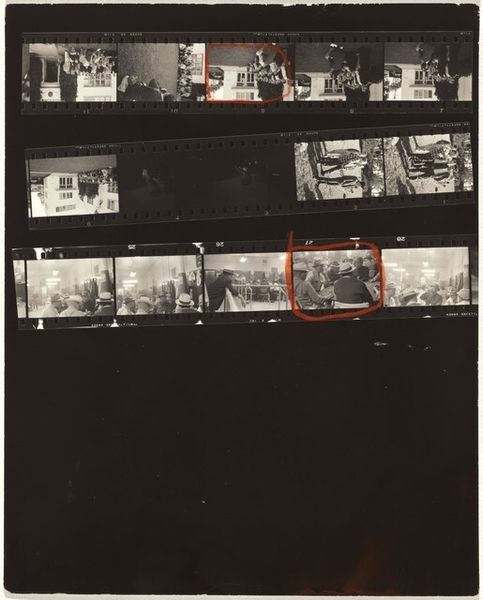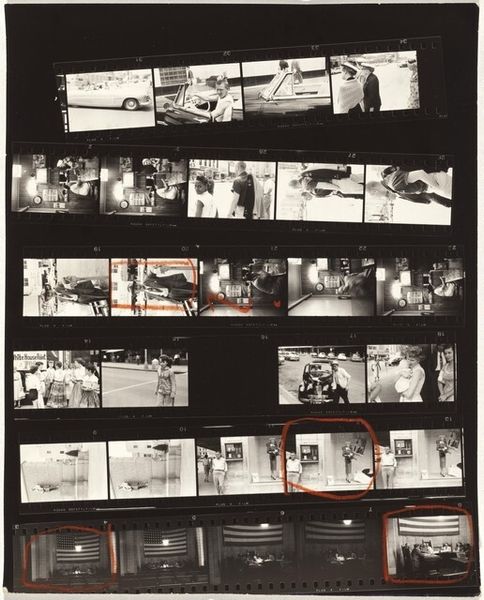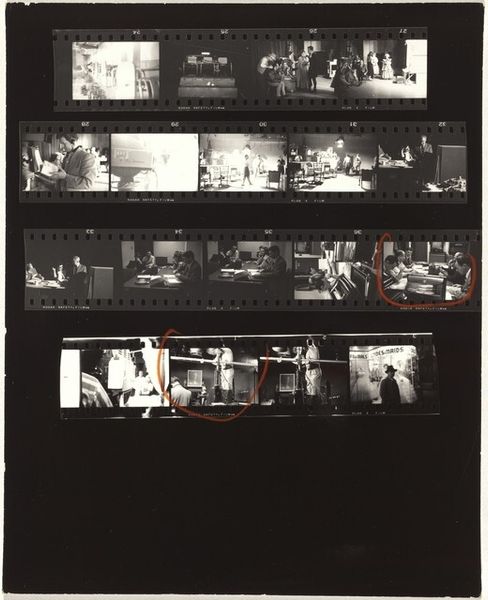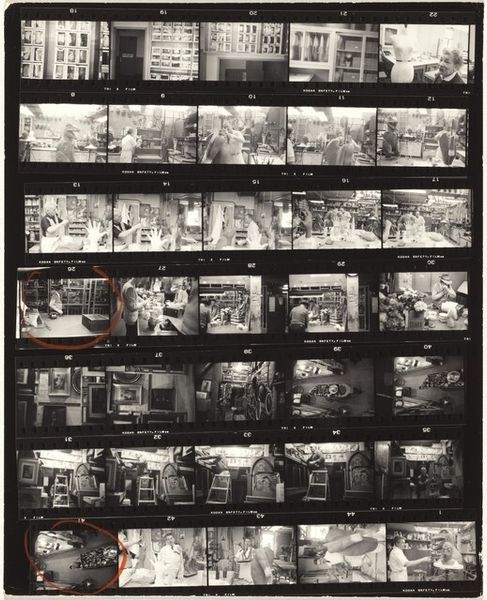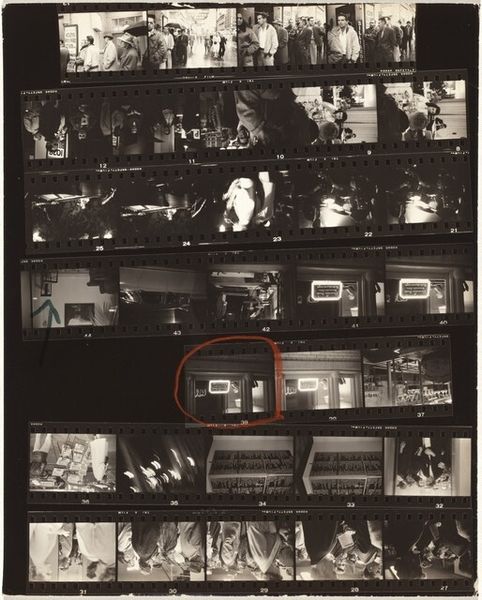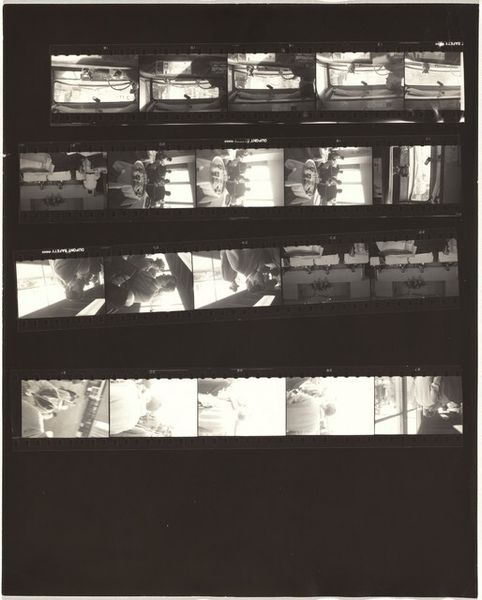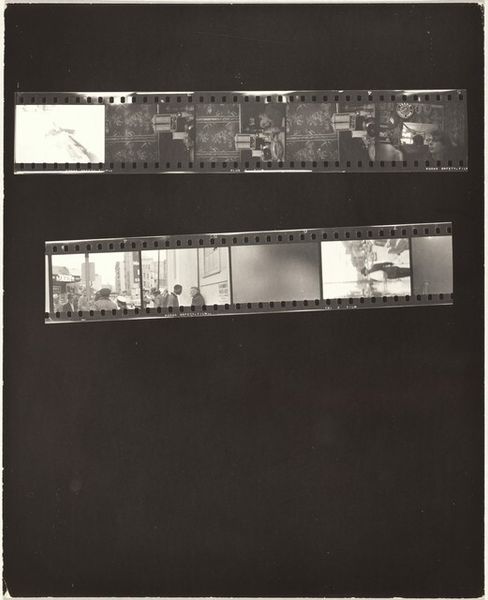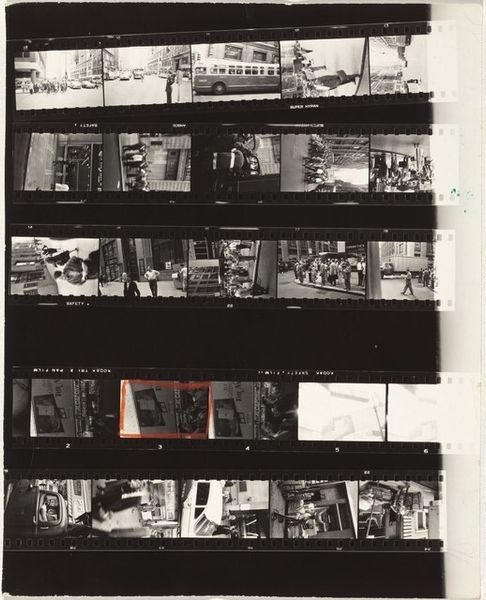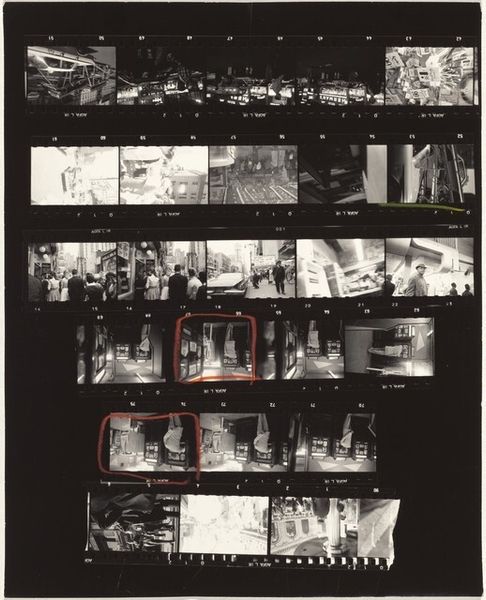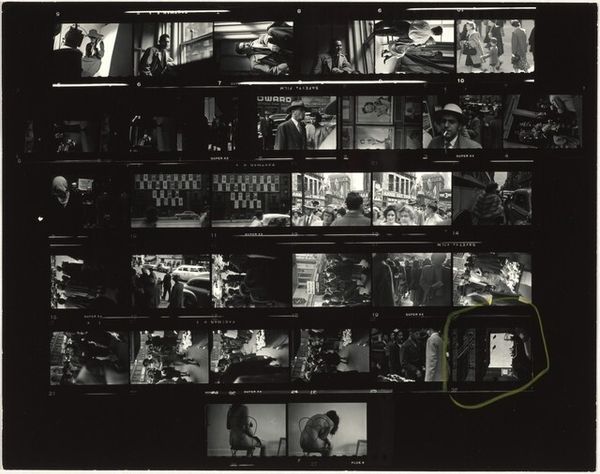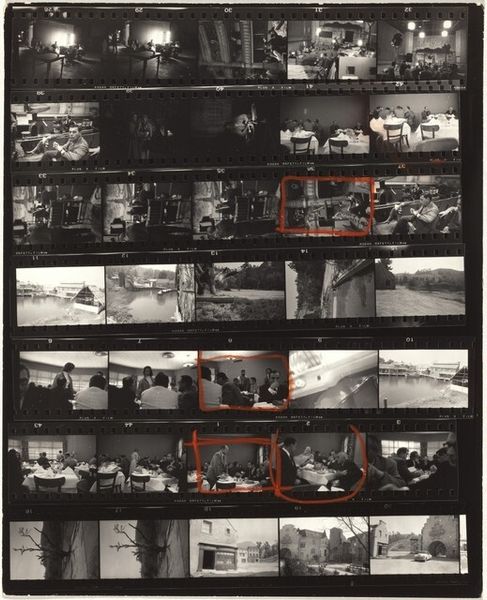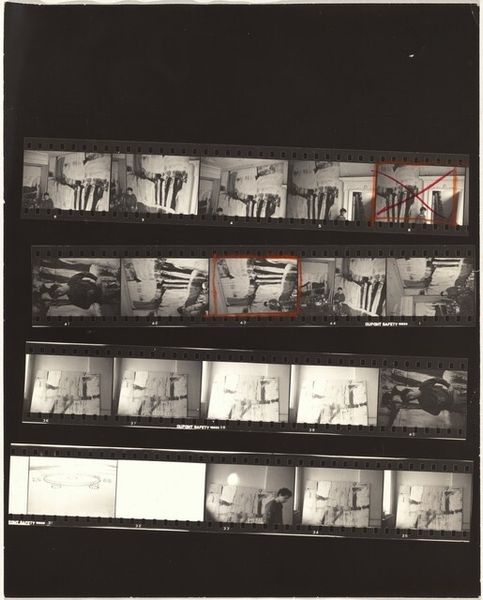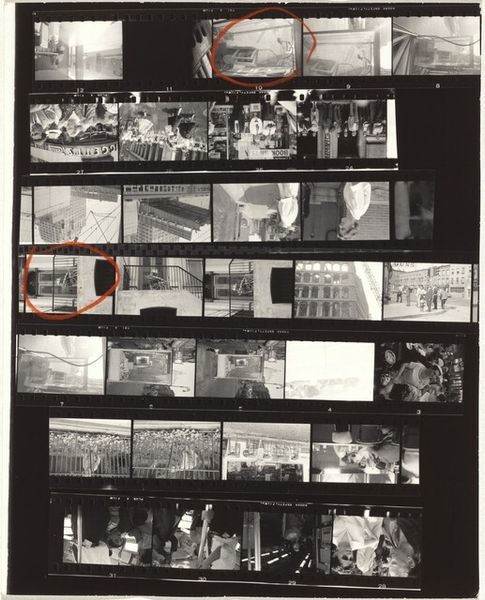
print, photography
#
print photography
# print
#
landscape
#
street-photography
#
photography
#
cityscape
#
modernism
#
realism
#
monochrome
Dimensions: overall: 25.2 x 20.2 cm (9 15/16 x 7 15/16 in.)
Copyright: National Gallery of Art: CC0 1.0
Editor: So, this is Robert Frank's "Guggenheim 743--Indianapolis" from 1956, a black and white print photograph. It's actually an image of a contact sheet, which I find really fascinating. There's this raw, documentary feel. How would you interpret this choice of presentation, particularly considering the period it was made in? Curator: It's a powerful piece, isn’t it? Placing the contact sheet itself as the artwork, rather than selecting a single image, speaks volumes about the role of photography in society at that time. Frank is challenging the traditional notions of the perfectly composed and presented image. Think about the late 1950s - mass media was on the rise, shaping public perception. Editor: So, you're saying by showing us the raw, unedited version, he’s commenting on the constructed nature of the images we usually see? Curator: Precisely. Frank's work often delves into the everyday realities of American life, especially the marginalized aspects often overlooked by mainstream media. By presenting the contact sheet, he allows us to see the process, the outtakes, the multiple perspectives. It asks, "What is worthy of being seen, and who decides?" It democratizes the image, you might say. Editor: That's really interesting. I hadn't thought about the political aspect so directly. Does this rawness connect with a broader trend within arts at the time? Curator: Absolutely. Consider the Beat Generation writers and artists also emerging at this time – they similarly sought authenticity and challenged the status quo through their work. Frank’s contact sheet aesthetic echoes their raw, unfiltered approach. What did you initially perceive was Frank doing with this artwork? Editor: Well, I mainly thought he wanted us to reflect on the photographic process, I guess. Curator: Indeed, and to ask ourselves why only some of these photographic "moments" are worth preserving for posterity. Seeing it this way definitely changes how I will view it going forward. Editor: Me too! It’s less about individual artistry and more about the social and political lens through which we view imagery.
Comments
No comments
Be the first to comment and join the conversation on the ultimate creative platform.
